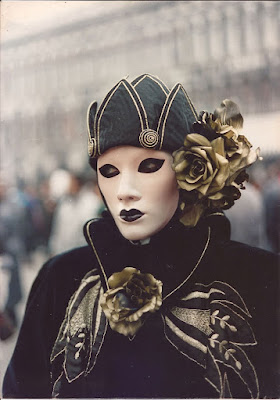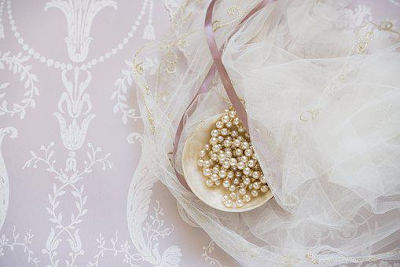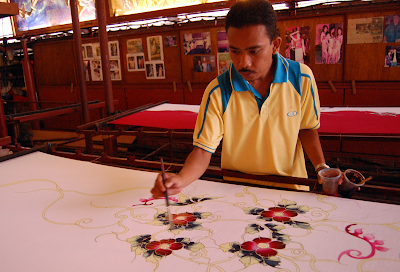Featured
- Get link
- X
- Other Apps
FASHION AND ART.
When "fashion," as opposed to "clothing," "costume," or "dress," is considered, it is as a socially shared notion of what should be worn at a given moment, rather than as an esoteric, ritualistic, or practical cover or ornamentation of the body.
The birth of the notion of fashion in the mid-nineteenth century is contemporaneous with a major shift in the art market.
This was not by chance, for the rise of comparable patterns in the creation and transmission of works of art was linked to the institution of fashion, defined as apparel that adheres to certain modes of production, representation, and consumption.
Fashion originated in the second part of the nineteenth century, with the emergence of the couture business in Paris, when a bourgeois audience began to expect perpetual change as an intellectual, artistic, and, most all, commercial stimulation for contemporary times.
This isn't to imply the concept of fashion didn't exist before.
Apparel that is manufactured according to a seasonal rhythm, in numbers big enough to have an influence on sartorial appearances within a culture, that can be exported as a "style," and that is consumed according to a set agenda is referred to as "seasonal clothing."
Similarly, after the European revolutions between 1830 and 1848, art as an autonomous production of subjective expression not directly bound to ecclesiastical or monarchist decrees emerged through the foundation of a bourgeois culture, when artistic education, independent display structures, and expanded commercial possibilities allowed for a new creation and distribution of art.
As a result of the socioeconomic roots in Western Europe, there exists a common point of origin.
Despite the fact that fashion was created all over the world, its global lexicon and reception were ultimately dictated by this "Western" idea.#
History I
"La Chambre syndicale de la confection de la couture pour dames et fillettes" established the guidelines for the production and promotion of high fashion in 1868, as well as the popularization of complex new fabrics through weavers like Joseph Marie Jacquard and men like Thimonnier Barthélemy developing the sewing machine.
It was also a period when the art market grew significantly as a result of technological advances in artwork reproduction, the establishment of museums such as the Louvre (which became the property of the French state in 1848), and the opening of commercial galleries in the French capital by the Durand-Ruels and Bernheim-Jeune (late 1850s, early 1860s).
As a result, art and fashion started to escape the bounds of private settings and make commodity consumption public.
Paintings were no longer limited to collections in haute bourgeois drawing rooms, and clothing was no longer produced on an individual basis in the privacy of one's own house.
One had to go out into the public, into a commercial context, to see art and purchase dresses.
Contrary to the bourgeoisie's social and political desire for enhanced privacy, fashion consumption in particular became part of a broader social current—being à la mode became a widely publicized statement in both art and apparel.
History-II
In terms of their historical perspectives, art and fashion vary greatly.
As points of friction and contrast, art examines its own historical tradition and, more importantly, the communication of history (historiography).
For artists, history is made up of mythical or ideological narratives that can be visualized, debated, and re-examined in the context of artistic tradition.
Styles or themes are referenced, like in academic painting's historicism, but the technique is actively considered.
The costumes in nineteenth-century European history paintings are frequently remodeled and redrawn to fit contemporary ideals of the past.
For example, a subject dressed in Roman toga is depicted with modern hairstyles and makeup, and the face and body of the painterly subject are based on contemporary perceptions rather than archaeological evidence.
The viewer of such works of art recognizes that historical accuracy is impossible, but expects the painter or sculptor to convey both the spirit of the past and its contemporary interpretation.
Authenticity is regarded as impossible in fashion as well; it is also undesirable for the design's material impact.
The imperative of fashion, that is, its absolute contemporariness, must be followed at all times.
A theater costume may strive for historical realism, but a piece of clothing designed for the fashion business must go beyond historical emulation and become an integral part of the present.
Fashion, unlike art, does not have to adhere to ideals of reflection, visual truthfulness, or integrity.
As a stylistic, pictorial sourcebook, fashion is given a liberal view of history.
A clothing or item may be a purposeful quotation that employs just one feature of history (such as the cut of a sleeve or waistline, or the setting for a diamond) while acting in an intentionally ahistorical way.
In fashion, the evocation of a historical period must be immediate, but not always accurate; visual impact and ease of understanding of the design take precedence over historical authenticity in material or form.
History is filtered through the present in a fashionable manner; it is continually updated and hence rewritten.
Inspiration.
Although the clothing in fashion, as opposed to costume design, needs to exist in the modern market and so cannot be considered as just retrospective or pedantic in its historical detail, these differing orientations to history within art and fashion are not only due to material considerations.
Art's seeming seriousness in connection to history, as well as its Platonic coupling of truth with beauty, makes it the established foundation from which fashion might take inspiration.
Fashion, like history, employs art as a visual model for current interpretation.
Fashion takes use of the fine arts' heightened status in western society to boost the cultural capital of its works.
When a fashion design makes an overt reference to a painterly style or theme, or references a specific artwork, the artist's or work's historical position and worth are also transferred to the fashion design.
This transfer takes place in a variety of ways:
(1) The artist becomes a fashion designer (rather than a costume designer).
(2) the designer employs artists for the decoration of the garment, as when Salvador Dal worked for Elsa Schiaparelli in 1937;
(3) fashion renders a contemporary style in painting a decorative motif on the dress, as in Yves Saint Laurent's Pop Art collection of 1966;
(4) the presentation of the collection becomes an art-historical tableaux vivant, as in Vivienne Westwood's catwalk of 1939;
(5) fashion renders a contemporary style in painting a decorative motif on the Fashion, on the other hand, offers artists with inspiration in the form of clothing, accessories, cosmetics, and so on, particularly in portraiture.
Women in couture attire are seen on the paintings of Henri Matisse and Pablo Picasso, for example, demonstrating how the lavish forms and colors of the designer's creation drive the painter's visual portrayal.
The artist is inspired to take a new look at corporeal representation by the new perception of the body that fashion can instigate through vibrant textiles, constricting or revealing fabrics, elongation of members through extravagant sleeves or extensions, or forms through bustles and padded hips, for example.
Production I.
Art and fashion have long used the same language to describe their processes.
Both the pictorial work of art and the couture gown are traditionally sketched out and then transferred to canvas using a paper template (the toile).
While the painting is the final manifestation of the artist's idea, the toile in couture requires a second transformation into materials to seem completed.
These procedural affinities may not entirely define the nature of modern painting or current couture, but they do help to explain why fashion designers have long had a deep affinity with painters and sculptors when it comes to the creation of their clothing.
Haute couture designers saw themselves as artists not only in the development of their designs and frames of reference (as evidenced by the titles of dresses that allude to pieces of music, histories, allegories, motifs, or painting styles), but also in subjective perception of the body, which prompted the challenge to sexual mores.
By the early 2000s, the reference to and structural engagement with the traditional kinship of couturier and artist had become less relevant, as indicated by Maison Martin Margiela's proposal of the paper template or toile to be worn as apparel proper.
Avant-gardes.
Through comparable patterns, processes, and forms of production, as well as moral reflection, oppositional manifestations, and attitudes toward commercialization, the parallels in the evolution of art and fashion in the nineteenth and twentieth centuries became obvious.
Initially, a tiny number of couturiers and couturiières in the second part of the 1800s dressed in the manner of established artistic bohemians.
They inhabited studios and welcomed customers in salons from Charles Frederick Worth and Émile Pingat in the 1870s through John Redfern in the 1880s, reflecting the atmosphere for working and exhibiting in the fine arts (for example, the Parisian Salon as seasonal event).
The cross-references and quotes that underscore the link between art and fashion are shown by the décor of these rooms with collections of portrait paintings and other wall hangings.
While fashion used painterly tradition as a culturally established frame of reference and stylistic sourcebook from the beginning, art looked to fashion for decorative solutions in three dimensions as well as structural inspiration in regards to repeatedly coined styles and the constant propagation of "originality" as a commodity.
The richness of adornment was shared between artworks and garments with the fin de siècle's subjectivism and declared decadence; expressive exaggeration was de rigueur for both areas, as evidenced in fashion by Jacques Doucet or the Callot Sisters.
The liberation of the body, as well as the emancipation of fashion's feminine clienchy, occurred around the turn of the century.
More couturiières (for example, Jeanne Lanvin or Jeanne Paquin) acquired economic independence within the fashion business, and this was mirrored in the cultural atmosphere as a whole.
The removal of the corset via the commercial adaption of non-Western costumes, along with a developing performativity in art (for example, opera and ballet became considerably more dynamic), released the body for new motions beyond socially sanctioned spaces.
This resulted in a flurry of art movements proclaiming the dismantling of corporeality (cubism), its advancement in space (futurism), or the building of a collective body politic (constructivism, Bauhaus), all of which were structurally influenced by and aesthetically represented in current couture.
Fashion portrayed the body as a flexible idea that could be defined by a sartorial shell, rather than as a social agent, but as an aesthetic concept.
Madeleine Vionnet, for example, highlighted how clothing molds the body's proportions, while Gabrielle Chanel displayed how to free the body's posture.
In the years between the wars, political mass movements resulted in a major increase in uniformity of attire.
Nonobjective painting supplied, literally, a pattern book for the abstraction in cut and ornamentation, which dispensed with cultural identifiers, and politically engaged artists exploited the uniting power of garments to proclaim equality.
Postwar artistic reflections on consumer society and the culture industry resulted in an ambivalent relationship between art and fashion, as the former looked to the latter for critical expressions of codified consumption, while the latter saw painterly solutions, such as Pop Art, as affirmation of its structural significance.
In the 1950s, 1960s, and 1970s, the art market quickly established a series of creative forms that paralleled seasonal declarations in fashion.
The demand for aesthetic inspirations grew in tandem with the creative growth of ready-to-wear, and the past and current history of art was increasingly necessary to serve as source material.
The idea of leveraging the fashion industry's tropes directly for the creation and depiction of art, rather than for its structural and procedural distinctions, has gained traction.
Fashion is referenced in contemporary art not only as an aesthetic model, but also as a field of reference in which the obstacles and pitfalls of modern life are glamorously enacted.
Fashion plays a curatorial role in contemporary art, as evidenced by the exhibition of —often experimental— clothing in museums and galleries, the pairing of dress and art in exhibitions about material objects or notions of beauty, and the use of the fashion industry to fund art projects.
Curatorial knowledge of fashion may lead to institutional support for collections; for example, the first catwalks of the Dutch pair Viktor and Rolf were only feasible thanks to the Centraal Museum in Utrecht and the Groninger Museum in Groningen's backing and purchase policies.
This suggests that fashion is positioned as one of many interchangeable representations in modern society, rather than as a fundamentally separate medium within a cultural hierarchy.
In contemporary art, the utilization of fashion's material base (textiles, fabrics) and, more importantly, its manner of representation (specific pictures, catwalk performances, and so on) is utilized to parody the late modernist staging of the cultural business.
Production II.
Despite increased financial pressure and the industry's movement toward ready-to-wear, couture production accepted the notion of the independent, subjective artist and developed this approach.
There is a clear dialectic in the fashion business that is exhibited in the desire for aesthetic, some could say artistic, innovation that cannot be met by the manufacturing process that gave birth to couture as the foundation for the fashion market developed in the early twenty-first century.
Designers see themselves as separate from the manufacturing process in auxiliary industries like weaving, in the same way that painters claim to be separate from the canvas or paper producer.
As a result, fashion has had to deal with the challenge of depending on a design process that contradicts its procedural base since the dawn of haute couture.
This explains the fluctuating parameters of art and fashion, as well as the latter's odd lingering around the former.
The art market voluntarily acknowledged the dialectic of fashion found in a personalized production that occurs inside mass manufacturing (which creates its social currency in the first place).
Although there has been a profusion of objects that covet a "designed" look and are alienated from the artists through their handing over of the actual production to others (such as craftsmen, designers, studio assistants), the dialectic is evidenced in representation, promotion, and consumption, in which fashion's principle is increasingly approximated by art in recent years (at least since Marcel Duchamp and Andy Warhol).
Because the interrelationship of the three segments represents the methodological heart of fashion, it might be difficult to distinguish the manufacturing process from reception and consumption.
Fashion is mostly created via trend forecasting and market research, both of which seek to predict the method and degree of consumption as accurately as possible.
As a result, fashion coverage, even outside of recognized advertising channels, reflects directly the designer or manufacturer's interests.
Of course, this looks to be quite different from artistic creativity that is impacted by demands from gallerists or commissions—increasingly so in late modernism—but subjectivism nevertheless asserts itself to ensure creative liberty and institutional independency.
Consumption I.
Parallel consumption of art (in exhibitions) and fashion (in catwalk shows or shops) marks the end of a transition in modernity that moved from acquiring material goods for their functional purpose to conspicuous consumption, in which objects are purchased for their societal significance, to consuming products as a spectacle, as entertainment within a saturated market.
At first, art was consumed for "educational" purposes, instructing the senses in what was thought to be morally correct.
It praised the culture's dominant spirituality while also praising the established political system.
The consumption of art began to operate along lines of individualized perception during the Enlightenment (as well as comparable tendencies outside of occidental culture), and the communication of ideal beauty was understood to be based on temporal and spatial aspects rather than an unchangeable cogent.
With the advent of a socially mobile middle class that was less culturally reliant on a single framework, art shifted its focus to the reflection and subsequent criticism of its audience.
It no longer projected an unattainable ideal of emotive or spiritual purity, instead emphasizing the vernacular, popular, and visceral.
The unique vision of a specific customer base supplanted the general idea that had previously been pushed for the whole civilization.
Such particularity was challenged by Western modernism, which looked again at quasi-scientific studies that were supposed to establish fundamental rules for the aesthetic and social significance of art.
Such "empirical" standards, however, were vulnerable to alter with each new art movement that usurped the previous one, wiping the sociocultural slate clean for new individualistic norms to be engraved on it.
With later modernism's tropes defining our perception of art in the early 2000s, art consumption switched from edification to amusement.
Consumption II
Fashion consumption, on the other hand, stems from the pragmatic trinity of protection, modesty, and decoration.
Clothes were originally purchased for their functional use, giving warmth, holy bodily coverage, and ornament.
The latter swiftly became a universal identifier of consumerism, with the magnificence and abundance of materials and accessories displaying social class.
However, sumptuary rules and conventions continued to stifle sartorial ambitions.
Regardless of how much money the customer spent, some colors or materials were reserved for aristocracy or clergy.
Consumption grew more visible in the eighteenth and nineteenth centuries, with fashion serving as the most visible display of material prosperity.
Sumptuous clothing, more than carriages or town residences, served as an instant indicator of the social status that the wearer wanted.
Because fashion is a more immediate but less costly expression of wealth than architecture or art collections, the nouveaux wealthy could employ excessive clothing spending to show a façade of financial and social success that did not exist.
Unlike art, fashion consumption is mostly focused on visual awareness, a form of sensuality, and experience of the physical self, rather than knowledge or education.
Obviously, couture, like high art, was first owned by the wealthy, but fashion remained relatively inexpensive for the striving middle classes, even if its frequent changing meant a seasonal expenditure rather than a one-time investment in a painting or sculpture.
Without needing to purchase it, art may be absorbed by just looking at it in a (more or less) public setting.
Within the subjective personal realm, the following mental consumption, that is, its appraisal, potential interpretation, analysis, or discussion takes place.
(This is in addition to the art "professional"—for example, an artist, gallerist, critic, or curator—who is required to publicly convey the outcome of such consumption.) Clothing is consumed in a reverse form by putting on a dress or jacket and traveling from a private environment, such as a changing room or bedroom, to a public space, such as a store, office, or social gathering.
Individuals may increasingly absorb art in the quiet of their own homes thanks to modern media.
Concerts on CD, films on DVD, and virtual museums on the Internet eliminate the need to retreat into one's own imagination from public spaces.
However, in art, the concept of going from the public to the private, and in fashion, the premise of moving from the private to the public, still divides the two sectors.
Conspicuous consumption of clothing and self-effacing consumption of art demonstrate a difference between materialist objective and subjective contemplation.
Fashion's ontology distinguishes it as a public good, despite its close closeness to the individual, while the piece of art ambiguously retains a more distant ideal (socially and physically) that is embedded in a larger cultural discourse and cannot easily be appropriated for personal consumption.
Consumption III.
Consumption in the cultural business has always been split between the poles of ephemeral fashion and the construction of permanent art infrastructure.
Fashion and art are distinguished by the distinction between viewing an item as "consumable," accepting its finite lifespan as a feature, and interpreting an object as a record or example of such consumption.
When something is acknowledged as fashionable, it instantly vanishes.
Fashion dies when the cut of a garment or the form of a coat is accepted into the cultural mainstream, as sociologist Georg Simmel proposed at the turn of the century.
Fashion must continually reinvent itself and announce a new style to replace the old one in order to ensure its survival in commodity society.
Modern art, on the other hand, is only regarded as existing until its progressive forms have been canonized.
Even in its most evasive performance, it constantly asserts its claim to enduring values—whereas garments cannot be considered permanent; otherwise, elements of the textile and fashion industries would have to shut down.
The dialectic (rather than a binary pairing) of ephemerality and permanence shapes how contemporary art and modern fashion are received.
Art must be mobile in order to represent and comprehend the ever-increasing pace of change in modernity, but it must also look permanent in order to avoid being dismissed as insignificant.
Fashion aspires to be long-lasting—creating a "classic" is a designer's crowning achievement—in order to be regarded as a significant cultural reality, but it must also be transitory for both material and philosophical reasons.
See also:
Caricature and Fashion; Music and Fashion.
References And Further Reading:
Anna, Susanne, and Markus Heinzelmann, eds. Untragbar. Ostfildern-Ruit, Germany: HatjeCantz, 2001.
Art/Fashion. New York: Guggenheim Soho, 1997.
Brandstätter, Christian. Klimt and die Mode. Vienna: Brandstätter, 1998.
Celant, Germanom, et al., eds. Looking at Fashion. Florence, Italy: Cantz/Skira, 1996.
De Givry, Valérie. Art et mode. Paris: Editions du Regard, 1998.
Evans, Caroline. Fashion at the Edge. New Haven, Conn.: Yale University Press, 2003.
Fausch, Deborah, et al., eds. Architecture: In Fashion. Princeton, N.J.: Princeton University Press, 1994.
Felshin, Nina, ed. Empty Dress. New York: Independent Curators Incorporated, 1993.
“Clothing as Subject.” Art Journal 1 (1995).
Guillaume, Valérie, ed. Europe 1910–1939. Paris: Les Musées de la Ville de Paris, 1996.
Hollander, Anne. Seeing through Clothes. New York: Penguin Group, 1980.
Martin, Richard. Fashion and Surrealism. New York: Rizzoli, 1989.
Cubism and Fashion. New York: Abrams/Metropolitan Museum, 1998.
Mode et art 1960–1990. Brussels: Palais des Beaux-Arts, 1995.
Müller, Florence. L’Art et la mode. Paris: Assouline, 1999.
Ribeiro, Eileen. Ingres in Fashion. New Haven, Conn.: Yale University Press: 1999.
The Gallery of Fashion. Princeton, N.J.: Princeton University Press, 2000.
Simon, Marie. Fashion in Art: The Second Empire and Impressionism. London: Zwemmer, 2003.
Smulders, Caroline. Sous le manteau. Paris: Galerie Thaddeus Ropac, 1997.
Smulders, Caroline, and Catherine Millet, eds. Art et Mode. Art Press 18 (1997).
Steele, Valerie. Paris Fashion. New York: Oxford University Press, 1988.
Steele, Valerie, and John S. Mayor. China Chic. New Haven, Conn.: Yale University Press, 1999.
Stern, Radu. Against Fashion. Cambridge, Mass., and London: MIT Press, 2003.
Troy, Nancy. Couture Culture. Cambridge, Mass., and London: MIT Press, 2003.
Wollen, Peter, ed. Addressing the Century. London: South Bank, 1998.
- Get link
- X
- Other Apps













